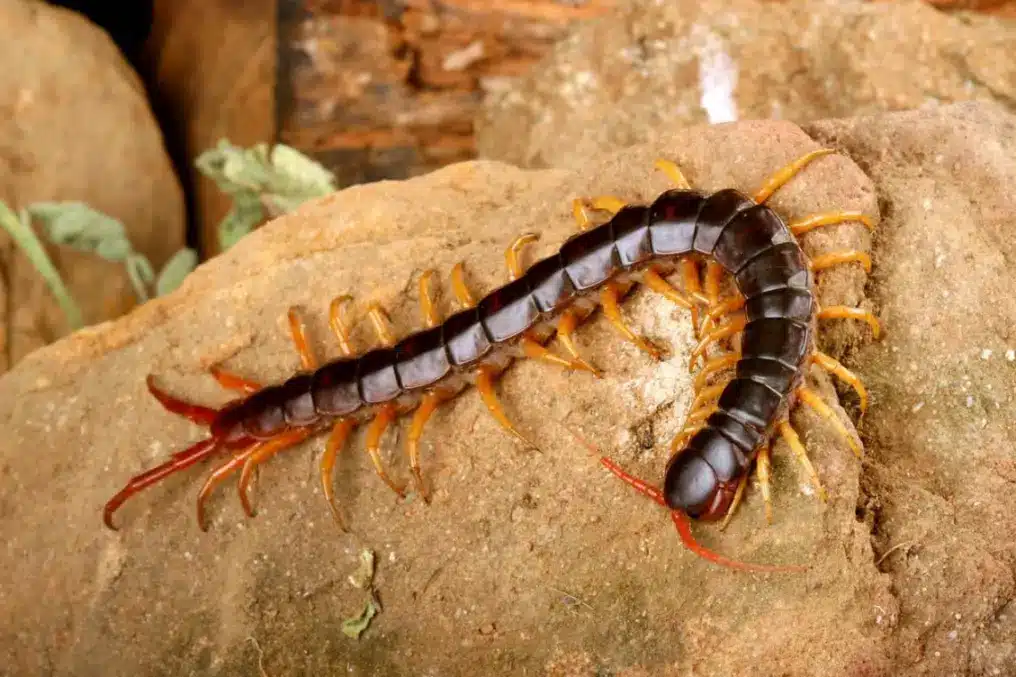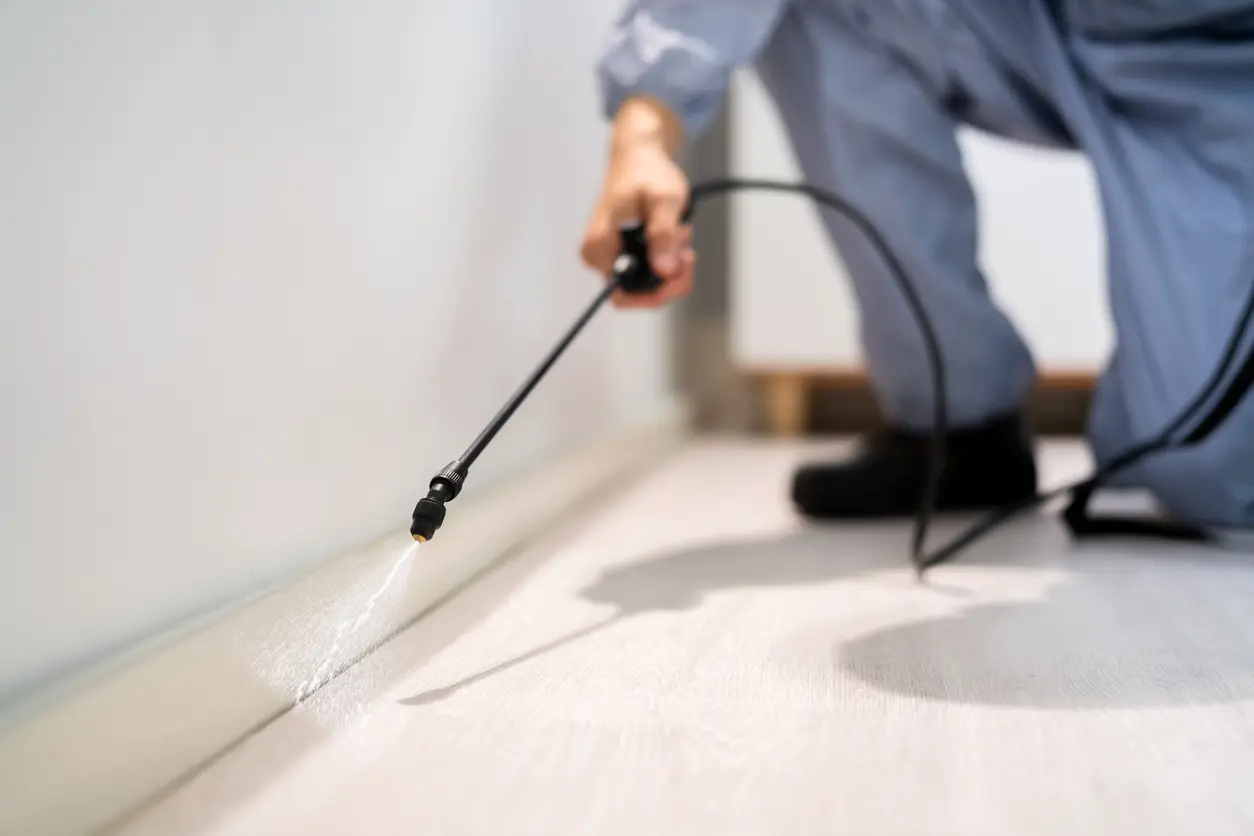Why Are Centipedes in My Home?
If you’ve ever found a centipede in your home, you know just how unsettling they can be. Their sudden appearance and lightning-fast movements are enough to make anyone feel uneasy.
But are they dangerous? Where do they come from? How do centipedes get in the house? Brooks Pest Solutions has heard your burning questions, and we’ve prepared this guide to help you navigate what centipedes are, how they end up indoors, and what you can do about them.
What Do Centipedes Look Like?
Centipedes are insects, and their name gives you a clue to their design. The prefix “centi” means “hundred,” while pede refers to “foot.” Put together, the name suggests they’re creatures with a hundred feet.
Surprisingly, many centipedes don’t actually have 100 legs. In fact, the exact number of legs varies by species, and it’s usually somewhere between 30 and nearly 200 pairs of legs. They’re often confused with millipedes, which are slower-moving, round-bodied arthropods. Millipedes also have misleading names, since most don’t have 1,000 legs either, as the prefix “milli” implies. However, they do carry two pairs of legs per body segment compared to the centipede’s single pair.
How Do Centipedes Get in the House?
Far and away, the most common centipede to find in your home is the house centipede. These centipedes sneak in through foundation cracks, unsealed vents, and gaps in windows and doors to hide in dark, quiet places, such as basements and bathrooms, or under furniture. With their speed and climbing ability, they can dash across walls or ceilings with ease.
House centipedes, like all species, are hunters. What makes them unusual is their ability to thrive in indoor environments. They can retain moisture without relying as much on ambient humidity or damp soil, giving them the freedom to stalk prey inside your home.
What Do House Centipedes Look Like?
From a distance, house centipedes may not look like centipedes at all. Their segments are tightly packed and less visible than those of other species. Combine that with their light-colored bodies and exceptionally long legs, and they’re often mistaken for silverfish darting across the floor.
Despite their alarming appearance, house centipedes don’t pose serious harm. They do have venom, but it’s not potent enough to cause more than mild irritation to humans.
Other Centipedes To Watch For
House centipedes are, for all intents and purposes, the only species that regularly infest homes. Still, they’re not the only type you might run across. Several other species are likely lurking around your yard and occasionally wander indoors.
These accidental invaders typically don’t last long inside. Without the resilience of house centipedes, they quickly dry out and perish in the low-humidity environment of most homes.
The truly massive and potentially dangerous centipedes you may have seen online are not native to the United States. Some of the largest species, such as the Amazonian giant centipede, inhabit regions where high humidity and warmth allow them to grow to intimidating sizes.
Stone Centipedes Under Your Masonry

Stone centipedes have a striking appearance but prefer to hide. Their reddish-brown, flattened bodies are only about 1 to 2 inches long, which is tiny when compared to species that can reach 10 times that size.
Their slim build allows them to squeeze into small crevices under stones and pavers. Despite their name, they have a consistent 15 pairs of legs, 30 legs total, making them a far cry from a true “hundred-footed” insect. The consistency of their leg count is fascinating and not typical of centipedes, since many other species show variability from one individual to the next.
On top of that, stone centipedes are incredibly fast runners. Like most outdoor species, they depend heavily on humidity and are poorly suited to indoor environments. If one does come inside, it likely will not reproduce.
Soil Centipedes Can Be Beneficial
Most centipedes you encounter in or around your home are more nuisance than threat, but soil centipedes can actually be beneficial. They’re secretive, preferring to live most of their lives underground, and they’re blind hunters that rely on their antennae to feel their way through the soil and detect prey.
Soil centipedes feed on earthworms, other small invertebrates, and most importantly, insect larvae. Many beetles begin their lives underground as grubs, where they feed aggressively on plant roots, often causing damage to lawns and gardens. A healthy population of soil centipedes can keep these pests in check and limit damage to your landscaping, so don’t be afraid if you see a few around the yard.
Fortunately, soil centipedes are practically harmless. They also hold the record for the most legs of any species, with some boasting as many as 191 pairs.
Bark Centipedes
Bark centipedes are among the most intimidating species in the United States, though their reputation often exceeds the actual risk. While bark centipedes carry a neurotoxin strong enough to subdue their prey, most species in the country don’t pose a serious threat to people.
Their bite usually feels similar to a bee or hornet sting. The exception is the giant redheaded centipede, the most dangerous centipede in the U.S. Found throughout the South and Southwest, its bite can cause headaches, nausea, and even tissue damage. However, it is not considered deadly to healthy adults.
How To Get Rid of Centipedes With Brooks Pest Solutions

Even if you see a single centipede crawling along your walls or floor, it’s a sign to take seriously. While one centipede doesn’t always mean you have an infestation, it could point to a bigger issue. The same goes for spotting spiders, scorpions, or other predatory pests indoors, as there may be something in your home attracting them.
Before an infestation begins, take the proactive approach with Brooks Pest Solutions. Our expert team has the tools and experience to identify what’s drawing these fast-moving pests inside and solve the problem at its source. With targeted treatments and prevention strategies, we’ll help shield your home from potential pest issues and larger infestations.
Contact Brooks Pest Solutions to schedule your consultation or request a quote today.
